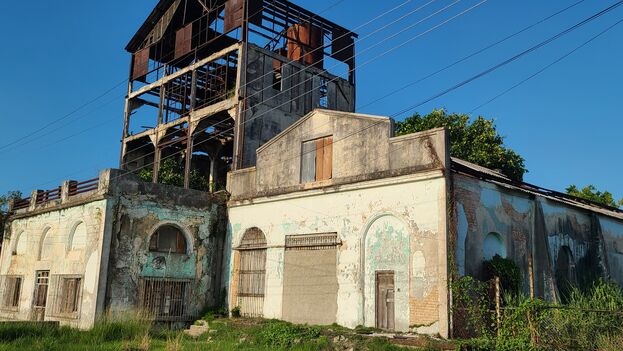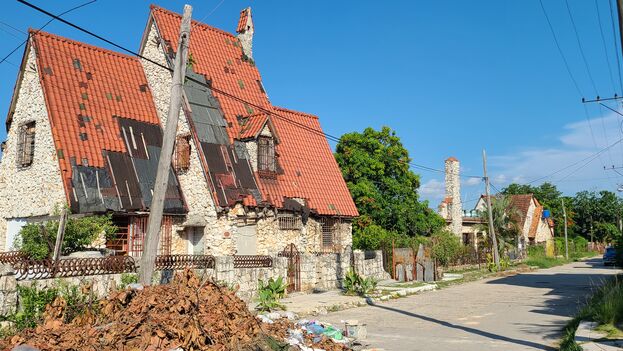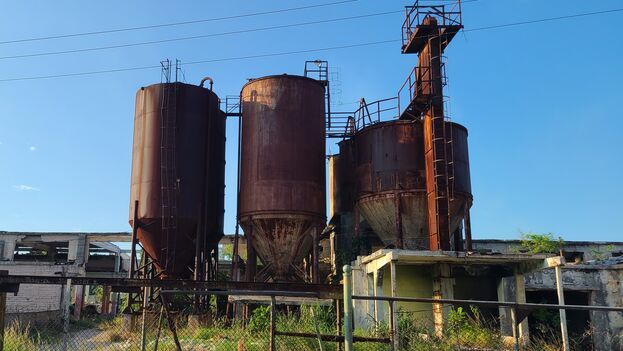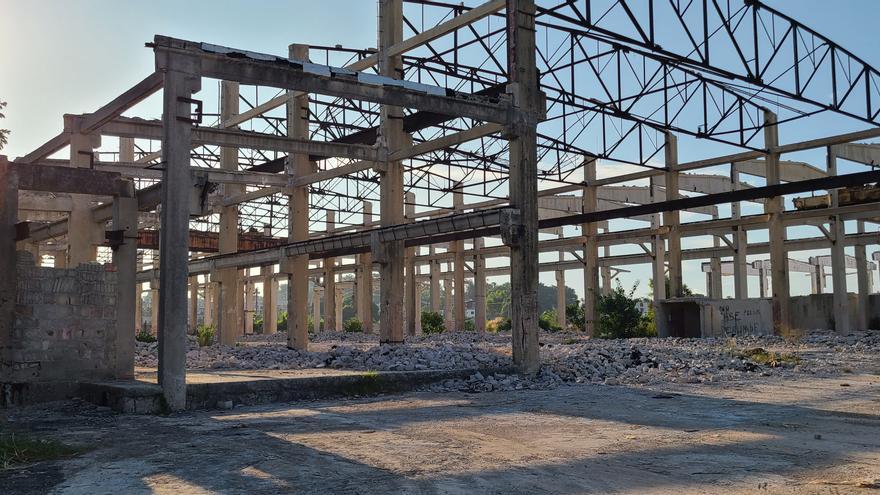
![]() 14ymedio, Nelson García, Havana, 16 September 2023 — Ruins attest to Lawton’s former splendor: abandoned factories, buildings reduced to rubble and the famous “Scandinavian castles”, on the verge of collapsing. For the neighbors, the deterioration of the neighborhood, located in the municipality of Diez de Octubre, until becoming one of the most dangerous places in Havana, has a start date: 1959.
14ymedio, Nelson García, Havana, 16 September 2023 — Ruins attest to Lawton’s former splendor: abandoned factories, buildings reduced to rubble and the famous “Scandinavian castles”, on the verge of collapsing. For the neighbors, the deterioration of the neighborhood, located in the municipality of Diez de Octubre, until becoming one of the most dangerous places in Havana, has a start date: 1959.
Omar, who has lived in Lawton since the Special Period, points out an inhospitable area on the corner of F and 12 Street. “The fish processing plant used to be there,” he tells 14ymedio. “Packages of lobsters, shrimp and many other seafood came out of that place”.
If the grass grows now and the garbage accumulates, the main complaint is because of poor planning by the Government. “In 1980, the processing plant ceased to exist and was converted into workshops of the Metal and Electrical Construction Company (COMELEC),” he says. The plan came to nothing after the fall of the Soviet Union, and after being closed for a while, it was decreed that everything be demolished.
“They said they were going to build houses for the workers”, recalls Omar, who used to work at COMELEC. “Thirty years have gone by: Where are they?”

Not far from the processing plant stands the tower of the old Havana distillery, built during the sugar boom of 1945. “The factory produced various types of alcohol until, once nationalized, the mechanism that channeled the hot water kept breaking down, causing the liquid to overflow from the boilers and begin to accumulate around the factory”, he explains. “First came the unpleasant smells and then the mosquitoes. It didn’t take long for this to fill with ditches and swamps until, eventually, they closed the distillery”.
Beyond the railroad bordering the distillery, Lawton’s rum industry suffered the same fate. “Everything is extinct here,” Omar summarizes.
The paint factory that the American company Sherwin Williams installed in Lawton – right next to the distillery – was confiscated by Fidel Castro’s Government in 1960 and first reassigned to the Electric Company, and then to the Geysel Power Plant.
Rigo, age 56 and a former worker at the also dismantled Lawton slaughterhouse, highlights the contrast between Geysel’s “painted and cared-for” building and the premises that once served as a paint warehouse. “The neglect is such that several trees have grown”, he says. A skeleton of beams and columns, as well as a series of rusty tanks, rises in what was once the Siporex prefabricated block industry.
“The only thing that works in Lawton, and barely, is the Siré Cookie Factory,” he says, alluding to one of the first industries in the neighborhood, built by Cuban Mariano Siré in 1927, and also expropriated by Castro.

One of the most emblematic cases of Lawton’s decay is that of the Antonio Maceo slaughterhouse, which became, after its abandonment in 2000, a mecca for illegal dog fighting and drug dealing. Several families have settled in the other rooms and offices, and even after two decades, they have not managed to overcome their two main problems: crime and constant threats of eviction.
Ramón, 69, remembers perfectly the decline of Lawton’s three bus depots: “There is only one left and it is practically a cemetery”, he concludes. The neighborhood also lost its fertilizer plant, and two other oxygen and acetylene plants, closed since the 1960s due to the Castro “phenomenon,” he says.
But the most obvious sign of decay is found in what remains of the three famous “European” chalets in the neighborhood, built at the beginning of the 20th century, although details of their construction or their former owners are not known. One of them served as a restaurant, supplied by meat from the slaughterhouse; another was a school, which was soon closed. During the Special Period, the Government located several families there, who modified the structure of two of the “little castles”, while the third is in a state of collapse.
“They used to be the symbol of Lawton,” says Ramón. “Now they are like the rest of the neighborhood: withered and forgotten.”

Translated by Norma Whiting
____________
COLLABORATE WITH OUR WORK: The 14ymedio team is committed to practicing serious journalism that reflects Cuba’s reality in all its depth. Thank you for joining us on this long journey. We invite you to continue supporting us by becoming a member of 14ymedio now. Together we can continue transforming journalism in Cuba.
